With the end of May approaching, I’m looking forward to the Chelsea Flower Show, the highlight of the British gardening year, where top garden designers will once again wow us with the latest trends in their show gardens. Of all the trends that have been ignited by past Chelsea gardens, tight, clipped boxwood (
Buxus spp) topiary has been one of the most influential and long lasting.
The “new English”–style garden, a favorite with many current Chelsea Flower Show designers, focuses on using boxwood for its topiary, and gardens this year will continue to feature boxwood topiary. Boxwood has always been the perfect choice for creating tight-clipped topiary, but the spread of box blight (
Cylindrocladium buxicola) in recent years has led to some problems growing it.
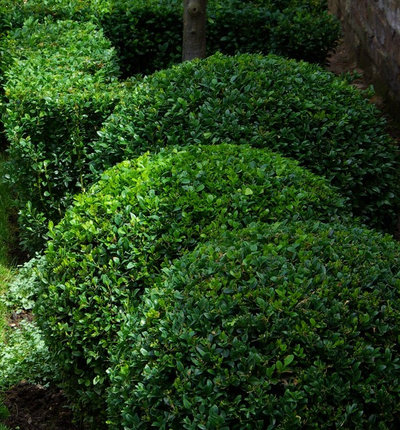
Laara Copley-Smith Garden & Landscape Design
Box blight is a fungal disease that specifically attacks boxwood. Initially an infection attacks and discolors the foliage; then it moves to the stems, by which time the leaf has usually died.
Box blight is an airborne infection, so there is no easy way to prevent it. Some cultural practices can help:
- Don’t water the foliage.
- It’s better to use drip feeders or a leaky hose.
- Always ensure any pruners or shears used are clean.
- Remove any dead leaves to reduce the availability of any resting spores.
There are no species of boxwood that are immune to box blight, so it’s important to find a suitable replacement if you’re affected by it.
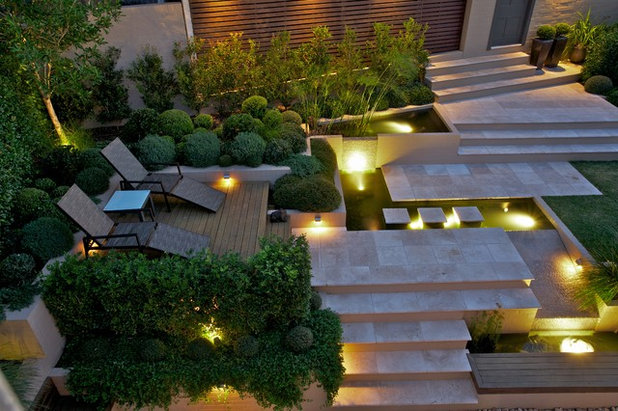
Art in Green
Designers may prefer the regularity of boxwood topiary alone, but here we see the interest created using different plants trimmed in similar shapes. One of the benefits of using boxwood alternatives is the difference you get in tone, texture and color by mixing and matching them. Let’s look at some plants we can use as substitutes.
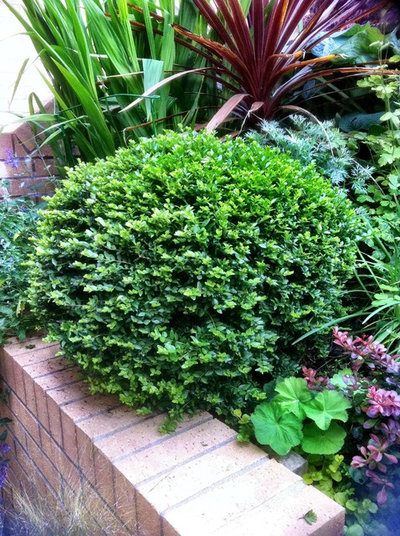 Privet Honeysuckle
Privet Honeysuckle(
Lonicera pileata;
USDA zones 6 to 9)
Normally grown as a ground cover with horizontal branches,
Lonicera pileata makes a good closely clipped specimen. Fresh green, early spring foliage and miniature sweetly scented white flowers held until late spring make it appealing for topiary use.
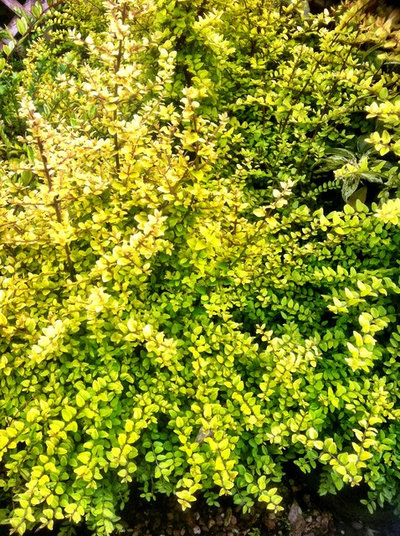 Honeysuckle ‘Baggesen’s Gold’
Honeysuckle ‘Baggesen’s Gold’(
Lonicera nitida ‘Baggesen’s Gold’; USDA zones 6 to 9)
Baggesen’s Gold is another shrubby honeysuckle. A small-leaved golden evergreen, it’s a favorite for container growing.
It will respond to tight clipping but tends to have quite strong horizontal shoots. It retains its golden color best in full sun, where it is happily drought tolerant.
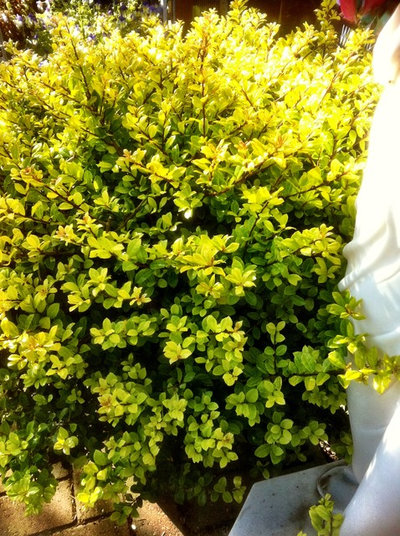 Japanese Holly ‘Golden Gem’
Japanese Holly ‘Golden Gem’(
Ilex crenata ‘Golden Gem’; USDA zones 5 to 9)
Japanese holly is a perfect slow-growing evergreen to take the place of boxwood. A member of the holly family but without the traditional leaf formation, it is available in the golden variety, as shown, or in green.
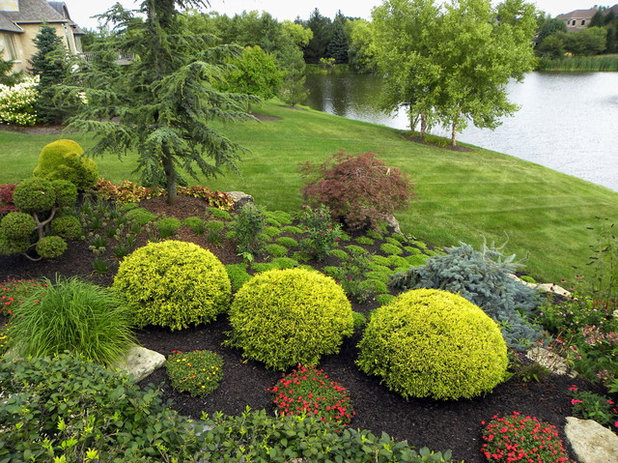
Smalls Landscaping
Sawara Cypress ‘Golden Mop’(
Chamaecyparis pisifera ‘Golden Mop’; USDA zones 5 to 7
Some plants, including some conifers, naturally form the type of mounded shape that we create through clipping. The slow-growing
Chamaecyparis pisifera ‘Gold Mop’ forms a perfect golden mound without clipping or pruning.
Other dome-forming conifers include
Picea abies ‘Little Gem’ and
Cryptomeria japonica ‘Globosa’.
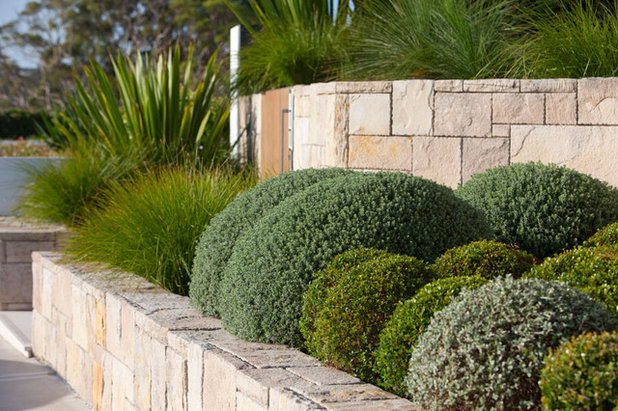
Secret Gardens
Small-Leaved HebesWe have a wide choice of hebes to use in our gardens, and they love temperate climates, most having originated from New Zealand. Most are hardy, especially the smaller-leaved varieties, which cope well with dry conditions and maritime climes.
There are quite a few hebes that naturally form evergreen domes, meaning they don’t need clipping, and that provide flower interest through the summer.
Hebe ‘Green Globe’. Its moss-green foliage forms a tight globe-shaped plant that is perfect in containers or in the border. Pure white flowers cover it in summer months.
Hebe topiaria. A super dome-shaped evergreen that has interesting silver-green foliage that sets off its white summer flowers perfectly.
Hebe rakaiensis. Creates a very tight light green dome. As with the others, this hebe has white flowers through June and July.
Hebe ‘Baby Marie’. One of the smallest of the dome-forming hebes, ‘Baby Marie’ is compact and low growing, with pale green foliage.





